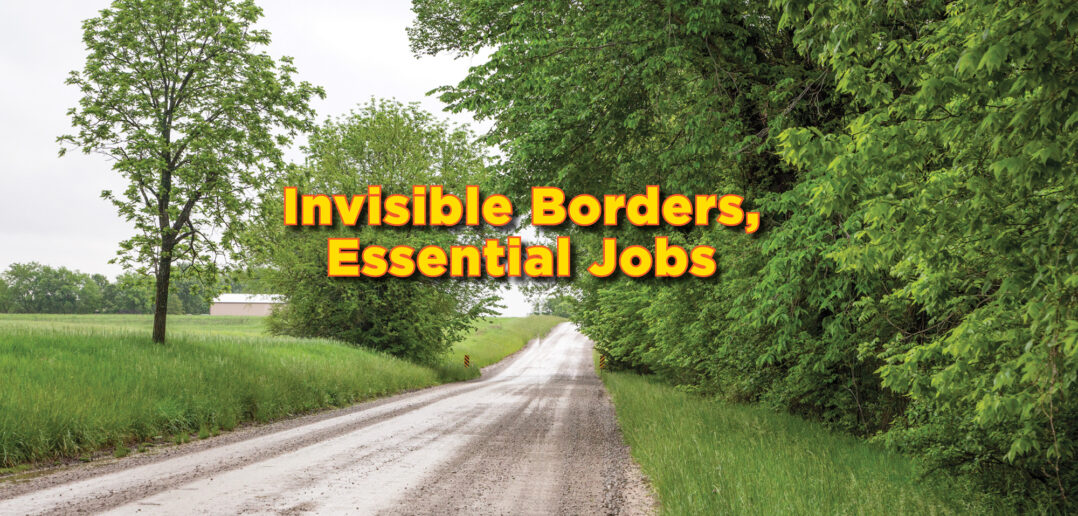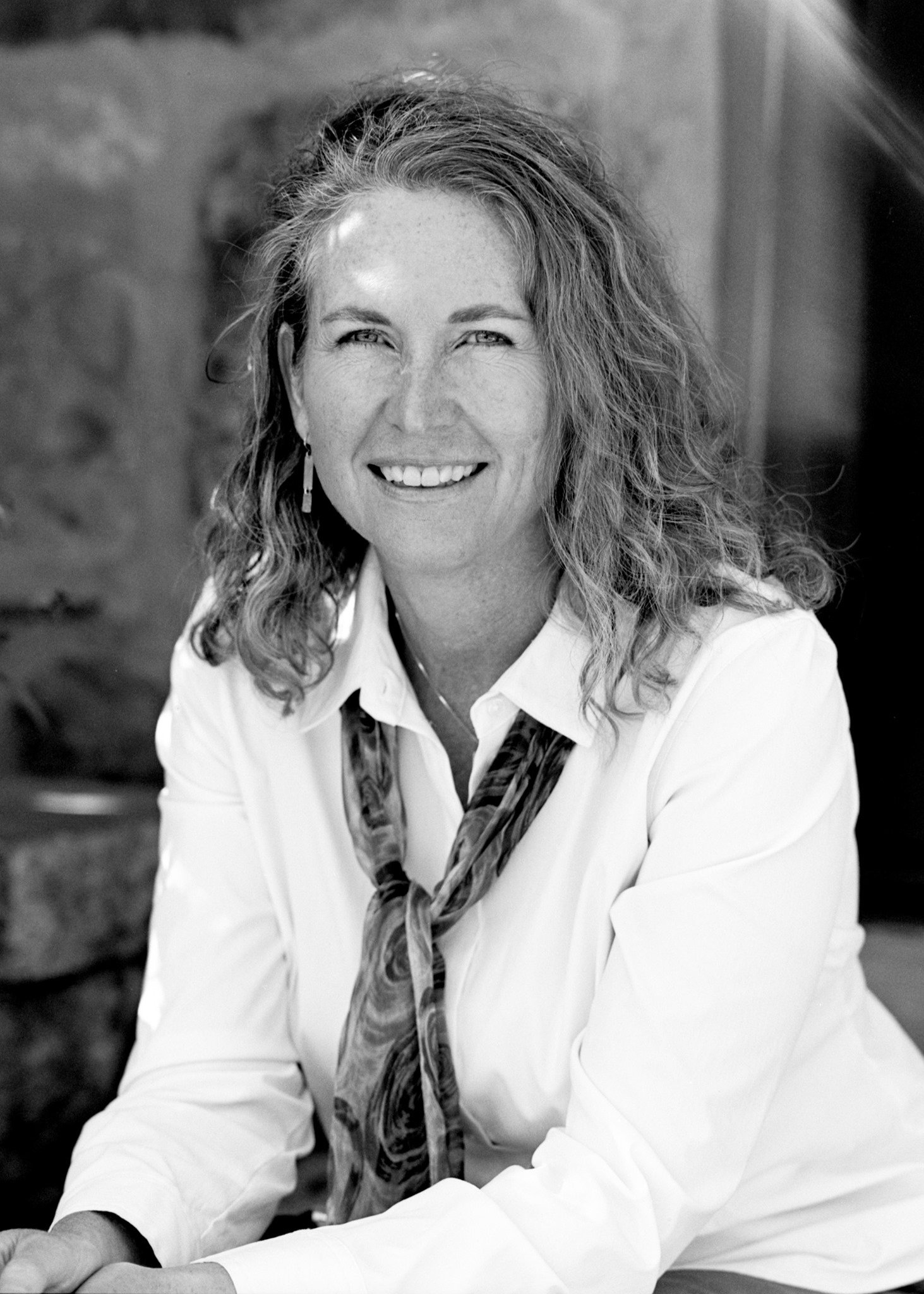| story by | |
| photos by | Steven Hertzog |
| OPEN A PDF OF THE ARTICLE |
Townships and fire districts are indispensable to county residents, who depend on them not only for maintenance issues but also emergency situations.
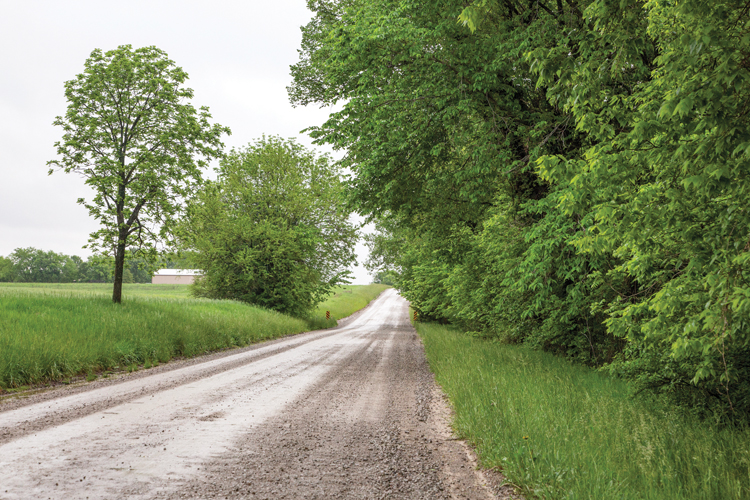
The back gravel roads of Douglas County
Some Douglas County boundaries are obvious, like the city limits when you drive into Lawrence. Township borders, on the other hand, are invisible yet determine who provides two rural essentials: road maintenance and fire protection.
It might surprise even those who live in the county that its nine townships oversee the maintenance of some 900 miles of roads, while mostly volunteer personnel in four fire districts respond to fire, medical and other emergency calls. Understanding the scope, funding and delivery of those services is increasingly important as Douglas County’s rural population grows.
“That is one thing, I think, over the next decade or so that will be challenging—all those people moving out there with an increased expectation of services,” says Jamie Shew, county clerk.
The Clinton, Eudora, Grant, Kanwaka, Lecompton, Marion, Palmyra, Wakarusa and Willow Springs townships are independent governing bodies, each with a three-person elected board that levies taxes and files an annual budget. Baldwin City and Lecompton are included within the townships surrounding them; Lawrence and Eudora are not.
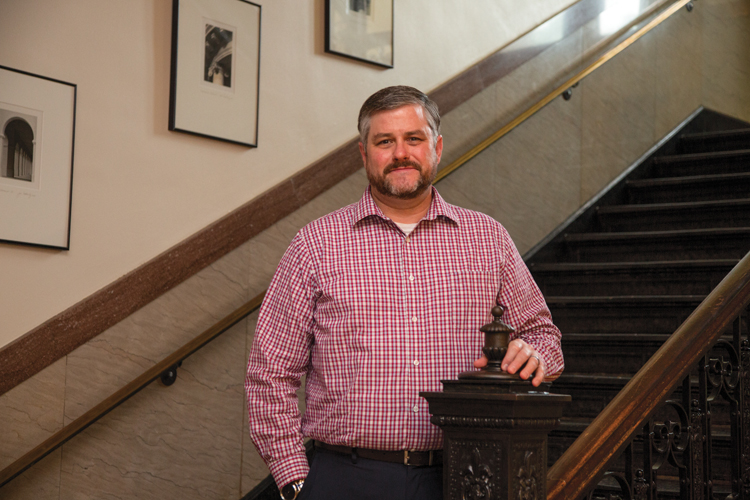
Jamie Shrew, County Clerk of Douglas County
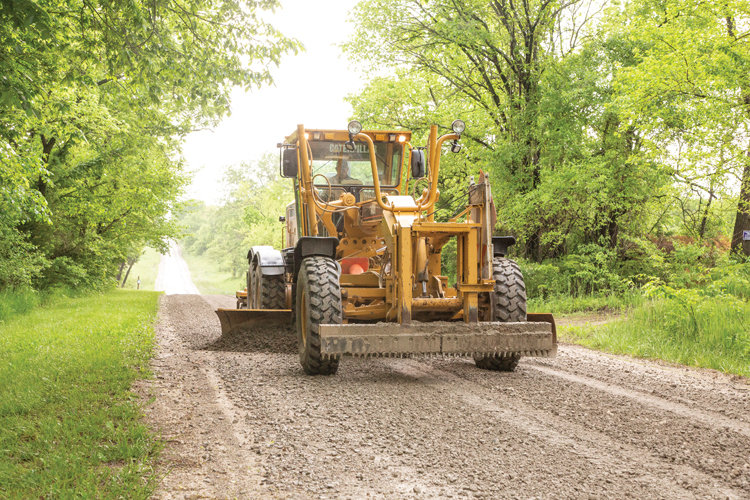
Paving the gravel roads of Rural Douglas County;
All Kansas townships are structured similarly, and state statutes empower them to do everything from maintaining roads and fire operations, to establishing water districts, caring for cemeteries and controlling prairie dogs.
Douglas County townships have historically focused on the first two, although township-controlled fire departments have in recent years transformed into autonomous fire districts. But township boards still have plenty to do. Most meet monthly (Wakarusa’s meets twice a month) in a township-owned meeting hall to prioritize road maintenance, projects and repairs. Each also owns a shop and equipment, such as graders and dump trucks, and employs between one and three staff. Some also have part-time or seasonal employees.
“Our whole goal is to do the best job that we can and be prudent with taxpayer dollars,” says Clint Hornberger, a farmer and rancher who is Willow Springs Township’s clerk.
Willow Springs budgets carefully for its 74 miles of gravel roads, but weather often creates unexpected problems. Tornado and flood damage cost the township an additional $30,000 to $40,000 during 2019 and 2020, and it has yet to be reimbursed by the Federal Emergency Management Agency (FEMA) for any of those funds.
As clerk, Hornberger is responsible for maintaining township records necessary for regular business and special instances such as interfacing with FEMA. Township treasurers oversee finances and bill payment. Trustees chair meetings and are the primary contact for entrance permits, which the county requires before issuing a building permit.
That said, residents can contact any board member with concerns. Once of the most frequent questions? When their road will be paved. Residents are usually disappointed to learn it’s too cost prohibitive for Willow Springs, Hornberger says.
“We would have to have a massive property tax increase to pave a handful of roads,” he continues. “We’d have to raise taxes by — I don’t even know what the math is.”
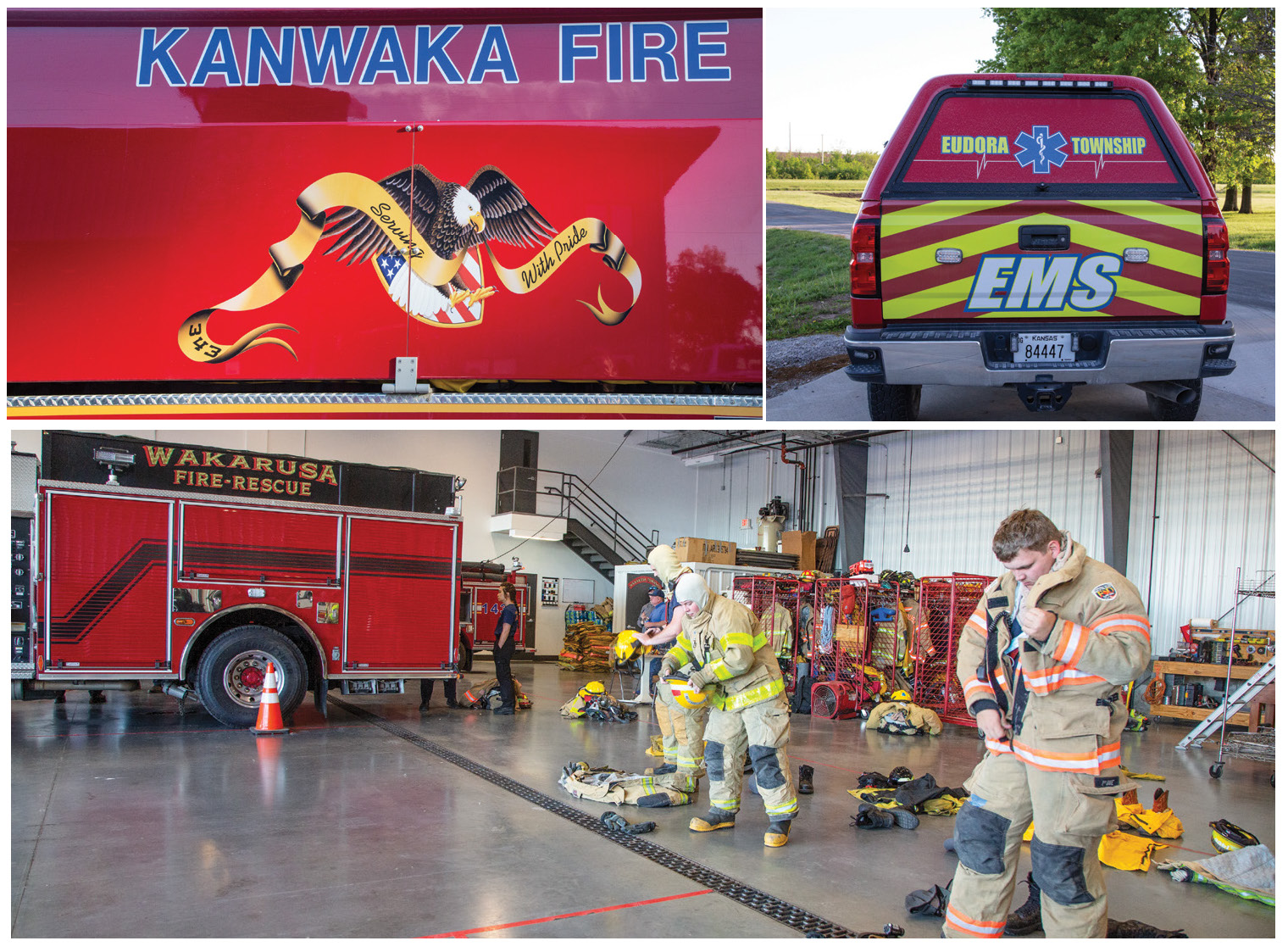
Consolidated Fire District participants: Kanwaka Fire, Eudora Township, Wakarusa Township.
Budgets Make Paving Possible—or Not
Most other townships are in a similar position. The exception is Wakarusa Township, which abuts Lawrence’s northern, western and southern edges. Residential development in those areas adds to the township’s budget, as does Evergy’s Lawrence Energy Center.
Wakarusa Township has in recent decades upgraded almost all of its more than 85 miles of roads using the chip-and-seal process to create a hard surface. That’s a boon for township residents, who drive mostly light-duty vehicles. A 5-ton weight limit restricts heavier traffic, Wakarusa Township Clerk Gerald Dwyer explains.
“That lets farmers go ahead and use the roads if they’re not running with commercial tags, but it stops delivery trucks from going through to cut off a few miles,” says the retired farmer and lifelong Douglas County resident.
Hard-surfaced roads are also cheaper to maintain. A 2016 Kansas State University Transportation Center study of roads managed by Douglas County showed gravel roads are almost three times more expensive to maintain per mile than paved roads.
“It takes money to get where we’re at, but once you get there, it’s better,” Dwyer says.
That’s not an option for other townships, however. Each township sets its own mill levy, ranging from 9.376 mills in Willow Springs Township to 22.256 mills in Grant Township in 2020. But the total assessed property value for that year also varies widely, from a high of $108.8 million in Wakarusa Township to $10.9 million in Clinton Township. Townships with a smaller tax base simply can’t raise the funds for hard-surfacing roads, so they instead focus on maintenance.
But even that has become more challenging as both gravel prices and the number of homes built along rural roads increase, Clinton Township trustee Matthew Fishburn says.
“More traffic means more maintenance, which means more rock, which means more money,” says Fishburn, who drives the township’s 25 miles of gravel roads each week to assess their condition.
Township board members praise the county’s public works department for helping with projects, including townships on bulk sign orders, surveying dangerous intersections and providing other assistance. Still, the responsibility rests with board members. They receive minimal compensation for their time, but that’s not why Fishburn and others do it.
“I’ve lived in this area my whole life,” says the contractor for Douglas County Rural Water District No. 5. “It’s a way to give back to the community.”

Consolidated Fire District participants: Kanwaka Fire, Eudora Township, Wakarusa Township.
Locals Give Back
Township lines sometimes shift when municipalities annex rural properties, but Eudora Township saw a significant change in 2011. That’s when Eudora was classified as a “second class” city, a category that isn’t included in townships. That forced the Eudora Public Library to also evolve. It had been jointly administered by the city and township; a new Eudora Community Library District was established by the Kansas Legislature to give it an independent board and taxing authority.
Eudora Township still manages 70-plus miles of gravel roads, a process that, as elsewhere, has become more complex as development escalates. But the work is still rewarding, says Keith Knabe, Eudora Township clerk.
“We grew up here and have always lived around Eudora,” says Knabe, who raises corn, soybeans and other crops. “We’re just happy to help out our community a little bit.”
Township board members are a dedicated bunch, and Kanwaka Township trustee David Wulfkuhle is no different. He routinely drives the township’s 49 miles of gravel road looking for downed signs, fallen tree branches, areas in need of grading or gravel, plugged drainage tubes and other issues. And in the winter?
“I go drive the roads at 2 a.m. or 3 a.m.,” Wulfkuhle says. “Somebody’s got to check them and see if we need to call the guys out.”
Palmyra Township trustee Donald Towns sometimes pitches in himself when work needs to be done on the township’s almost 130 miles of road. He accumulated 30-plus years of experience on road maintenance equipment as a Douglas County employee. Now retired, he still has a commercial driver’s license and volunteers his time running the road grader or anything else, when needed.
“Our main thing is safety,” Towns says. “I’ve got to keep people moving.”
Districts Deliver Fire Protection
Safety is also a priority for Douglas County’s fire districts. Fire protection was once the province of townships, but those departments have now transitioned into fire districts with their own governing boards and taxing authority.
Fire District No. 2 serves Palmyra Township. Fire District No. 3 is responsible for Willow Springs Township. The southwest corner of Marion Township relies on Osage County’s Fire District No. 4, while Grant Township contracts fire services through Lawrence-Douglas County Fire Medical, which also provides medical response in the entire county. Eudora and Baldwin City maintain their own volunteer fire departments. All fire districts also have interlocal agreements to assist neighboring townships, cities and counties, when needed.
The bulk of rural Douglas County, though, is covered by Consolidated Fire District (CFD) No. 1, which in January 2021 unified the Clinton, Eudora, Kanwaka, Lecompton and Wakarusa fire districts with Clarion Springs EMS. CFD No. 1 now includes 10 stations with 104 personnel, all but four of whom are volunteers. It provides an all-hazards response for 228 square miles of Douglas County, including everything from fires to car accidents, medical emergencies and providing lift assistance for individuals.
Unifying helped districts pool resources, eliminate duplicate equipment and re-evaluate the system to meet two goals: better firefighter safety while maintaining and enhancing services. So far, it’s paying off, says CFD No. 1 Fire Chief Mike Baxter.
Data collected from the unified district’s runs shows response times have improved 40 percent in areas previously served by a limited number of volunteers. The benefit is self-evident: Faster response means less damage. But response times (a function of having more and better volunteers available) also help determine the Insurance Services Office (ISO) fire scores that insurance companies use when setting rates.
Maintaining a volunteer fire force keeps taxes lower, too, because communities pay only for facilities, equipment and training. That’s a significant savings for taxpayers—volunteer firefighters’ time alone is worth an estimated $46.9 billion a year in the U.S., says the National Volunteer Fire Council (NVFC).
“People take that for granted because they don’t realize these are volunteers who do it because they love it,” says Fire District No. 2 Fire Chief Mike Hirschmann.
Call for Volunteers
Volunteers are getting harder to come by, however. The number of volunteer firefighters in the U.S. reached a low in 2017, the NFVC says. In Kansas, 79 percent of fire departments are completely staffed by volunteers, and another 10 percent are mostly volunteer, according to the U.S. Fire Administration. Fire personnel typically carry pagers or radios. When a call comes in, they respond.
“They’re giving up Christmas, birthdays and holidays,” says Hirschmann, who is also a battalion chief for Johnson County Fire District No. 1, near Gardner. “They drop what they’re doing and answer when you call 911.”
Palmyra’s Fire District No. 2 has 23 volunteers, one station, two fire trucks, two fire engines, a water tender for transporting water and other equipment, and is responsible for 83 square miles. It typically responds to between 85 and 130 structural and grass fires a year; in 2020, it began responding to traffic accidents and soon plans to add emergency medical care.
Not everyone who volunteers fights fires, though. Hirschmann says volunteer departments such as his also need administrative, inventory and other assistance. Volunteers’ dedication and spirit of service is a point of pride for CFD No. 1’s Baxter, and it offers peace of mind for rural residents.
“It’s knowing that when you dial 911, somebody’s going to show up,” Baxter says. “We as a department take it as a personal matter to ensure your safety and well-being.”
![]()

